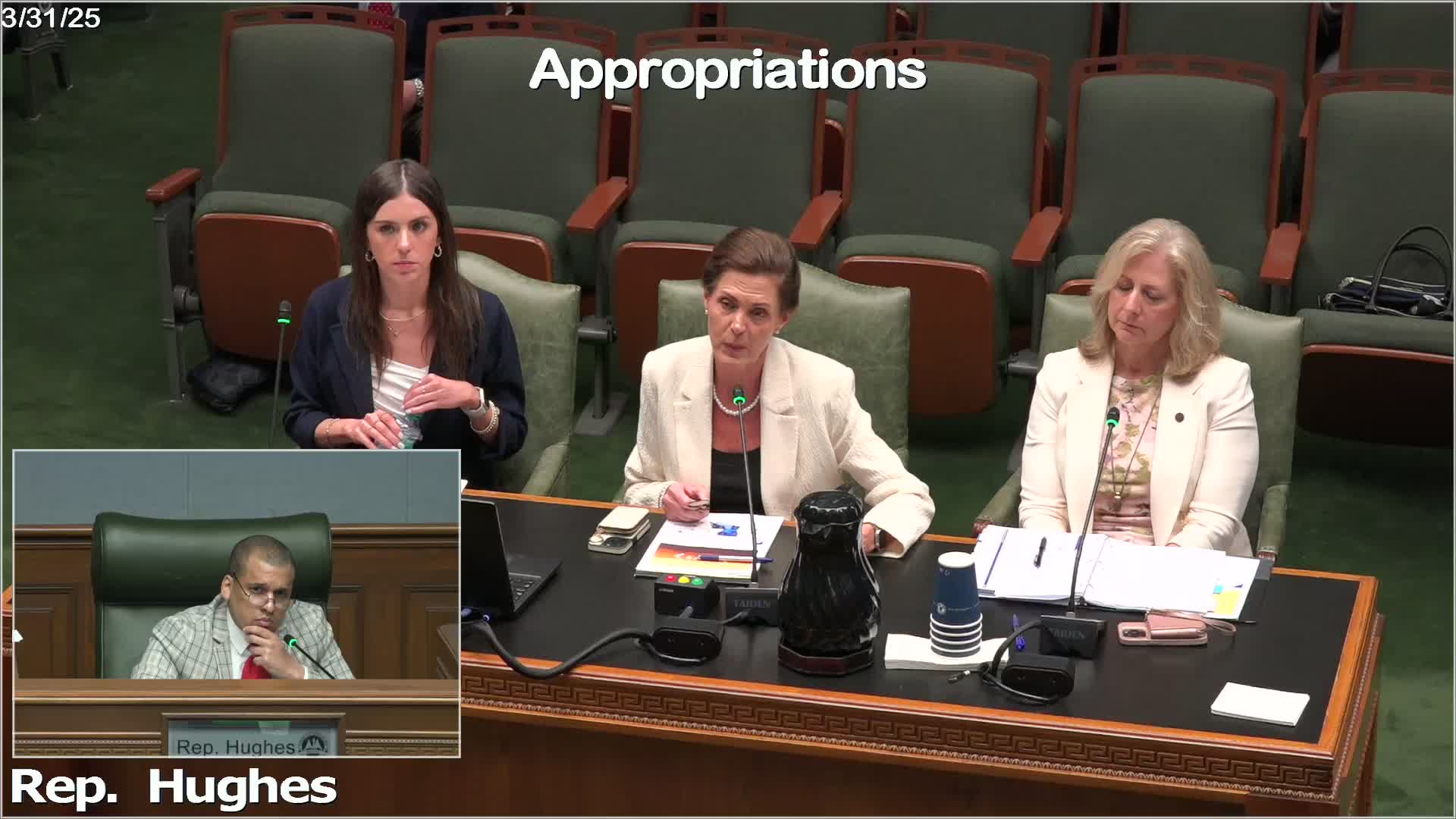Workforce Commission outlines strategic plan, co-location pilots and warns of federal funding uncertainty
March 31, 2025 | Appropriations, HOUSE OF REPRESENTATIVES, Committees, Legislative, Louisiana
This article was created by AI summarizing key points discussed. AI makes mistakes, so for full details and context, please refer to the video of the full meeting. Please report any errors so we can fix them. Report an error »

The Louisiana Workforce Commission presented a FY26 executive budget recommendation of about $300 million to the House Appropriations Committee and described a strategic plan focused on employer-aligned training, moving people from dependence to independence, and improved education alignment.
House Fiscal's review showed the department's funding is dominated by federal grants and statutory dedications; federal funds make up the largest share of the $300 million recommendation and the Office of Workforce Development uses roughly 51.8 percent of the department's budget. The department has 868 TO positions and reported 102 vacancies as of Dec. 30, 2024.
Secretary (unnamed in transcript) told the committee the agency's three goals are: drive economic growth through business workforce solutions, move people from dependence to independence, and align K'12 and higher-education outputs to job demand. She described pilot integration and co-location projects, including a pilot that places Department of Children and Family Services staff inside American Job Centers in a 10-parish East Baton Rouge area, with cross-training so case managers can build direct pathways to employment.
Deputy-level staff said the state currently leaves federal Rehabilitation Services (LRS) matching funds unclaimed. Officials said roughly half of a recent federal allotment has not been drawn down for several years; the department receives about $3.69 in federal funding for every $1 of state match and officials said an additional roughly $8,000,000 in state general fund would be needed to pull down the full federal allotment in the current year.
Why it matters: workforce funding and program alignment are central to converting LED's project pipeline into local hires. Committee members asked about vacancies (about one-third of the open positions are in Unemployment Insurance and another third in Workforce Development), employer-facing portals, call-center surge staffing, and rule reductions to reduce administrative friction.
No formal committee action was taken on the day's presentation; the department committed to continued work on co-location pilots, fraud prevention and plain-language clarity for unemployment information, and to provide follow-up detail on specific program matches and vacancy-fill plans.
House Fiscal's review showed the department's funding is dominated by federal grants and statutory dedications; federal funds make up the largest share of the $300 million recommendation and the Office of Workforce Development uses roughly 51.8 percent of the department's budget. The department has 868 TO positions and reported 102 vacancies as of Dec. 30, 2024.
Secretary (unnamed in transcript) told the committee the agency's three goals are: drive economic growth through business workforce solutions, move people from dependence to independence, and align K'12 and higher-education outputs to job demand. She described pilot integration and co-location projects, including a pilot that places Department of Children and Family Services staff inside American Job Centers in a 10-parish East Baton Rouge area, with cross-training so case managers can build direct pathways to employment.
Deputy-level staff said the state currently leaves federal Rehabilitation Services (LRS) matching funds unclaimed. Officials said roughly half of a recent federal allotment has not been drawn down for several years; the department receives about $3.69 in federal funding for every $1 of state match and officials said an additional roughly $8,000,000 in state general fund would be needed to pull down the full federal allotment in the current year.
Why it matters: workforce funding and program alignment are central to converting LED's project pipeline into local hires. Committee members asked about vacancies (about one-third of the open positions are in Unemployment Insurance and another third in Workforce Development), employer-facing portals, call-center surge staffing, and rule reductions to reduce administrative friction.
No formal committee action was taken on the day's presentation; the department committed to continued work on co-location pilots, fraud prevention and plain-language clarity for unemployment information, and to provide follow-up detail on specific program matches and vacancy-fill plans.
View full meeting
This article is based on a recent meeting—watch the full video and explore the complete transcript for deeper insights into the discussion.
View full meeting
